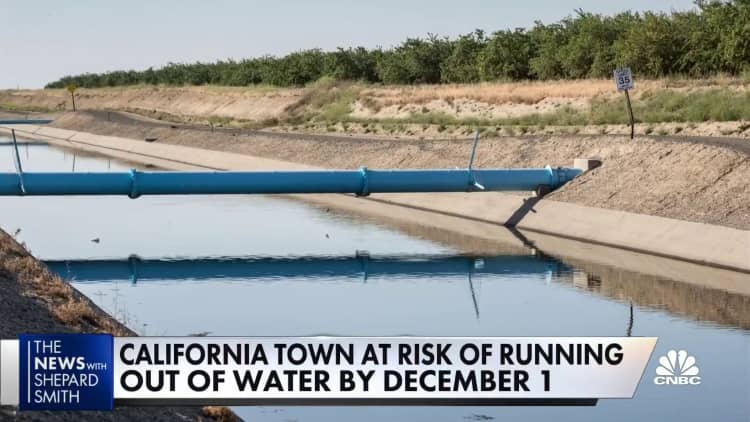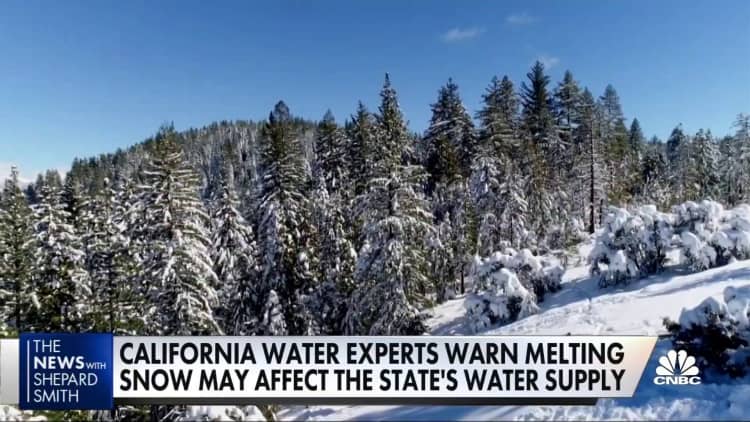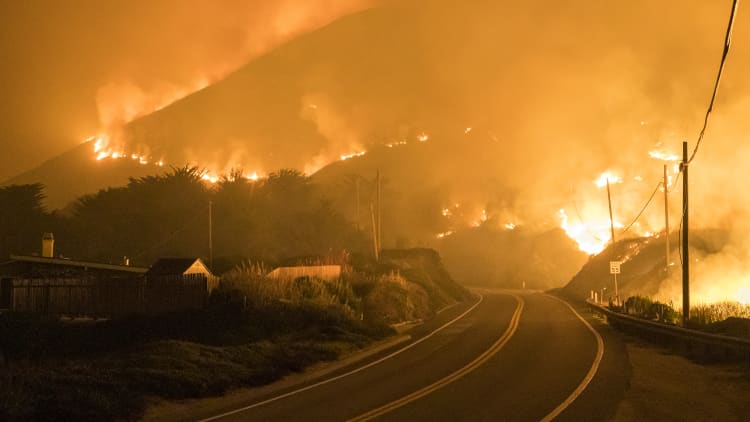
Coalinga city officials estimate their small town will run out of water by Dec. 1.
The city, which is typically allocated 10,000 acre-feet of water, has only been allocated about 2,000 acre-feet this year, according to Pro-Tem Mayor Ray Singleton. And that supply is almost gone.
"It was beautifully green just eight years ago. If you look at Google Maps, my yard was green, but like maybe five or six years ago now you look at it now, it's like the Sahara Desert," said Singleton. He's been a resident since 2000 and is raising his family there.
The California valley city, located inland between Los Angeles and San Francisco, is home to an estimated 17,465 people. All the people living in Fresno County, where Coalinga is located, are experiencing a drought. It is the second driest year to date over the past 128 years, according to the National Oceanic and Atmospheric Administration.

Coalinga residents have been living under water restrictions, such as no watering their front lawns or washing their cars, and there's a moratorium on pools. If a resident wants to maintain their pool, they need to sign a contract with the town stating they will provide their own 30,000 gallons of water, according to Singleton. One of Singleton's current concerns is that the fire department needs to flush out the hydrants soon, and that could use up even more water.
The city is also the site of a state prison and state mental health hospital. The city has no control over how these facilities use water, and Singleton estimates they pull around 25% to 30% of the city's supply. He said he sees these institutions waste water and called it "frustratingly insane."
The Pleasant Valley State Prison in Coalinga told CNBC that it reduced water usage by more than 21% since 2020 with steps such as using pressurized water for cleaning, reducing urinal diaphragm capacity, reducing the washdown schedule of the wastewater treatment facility and reducing irrigation of landscaping.
The hospital did not immediately respond to CNBC's request for comment.
Singleton has attempted to purchase water for Coalinga from the open market, but he said it is priced much higher than what it is typically worth. Singleton said the town may have to raise taxes but he's hoping to find a grant or other financial assistance so Coalinga will be able to provide each resident their required 55 gallons of water per day for health and safety standards.
They're also lobbying state officials. He said, "Sacramento, it's beautiful up there. I mean, it's like, wow, we would love to have some of the water that you have. It's crazy that we don't."
The Bureau of Reclamation said the persistent drought is impacting many communities it serves. It's been working closely with the City of Coalinga to find solutions, including finding water that may be transferred to the city. The Bureau also said the agency has funding available through the Urban Community Drought Relief grant program and would be ready to work with Coalinga to walk the town through the process. Reclamation said they will be able to "provide immediate assistance for whatever level of funding is needed to support the purchase of water for the city's needs."
It also said that Coalinga historically uses 7,125 acre feet of water in the wettest years but that in this "third consecutive year of severe drought," they delivered 2,800 acre feet of water to Coalinga.
Meanwhile, as the farmland around him has turned from trees to solar panels, Singleton also seemed to imply that the allocation of water could have something to do with the changing local economy. "Are we in a drought or are WE in a drought?" Singleton asked, gesturing to imply that the effects could be worse in Coalinga than elsewhere. "Because the state seems to be looking great around us and we're looking brown on the inside."
Correction: Some comments about the drought were misattributed. They came from the Bureau of Reclamation.



